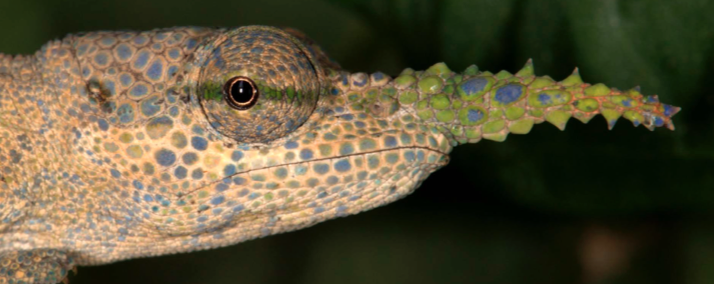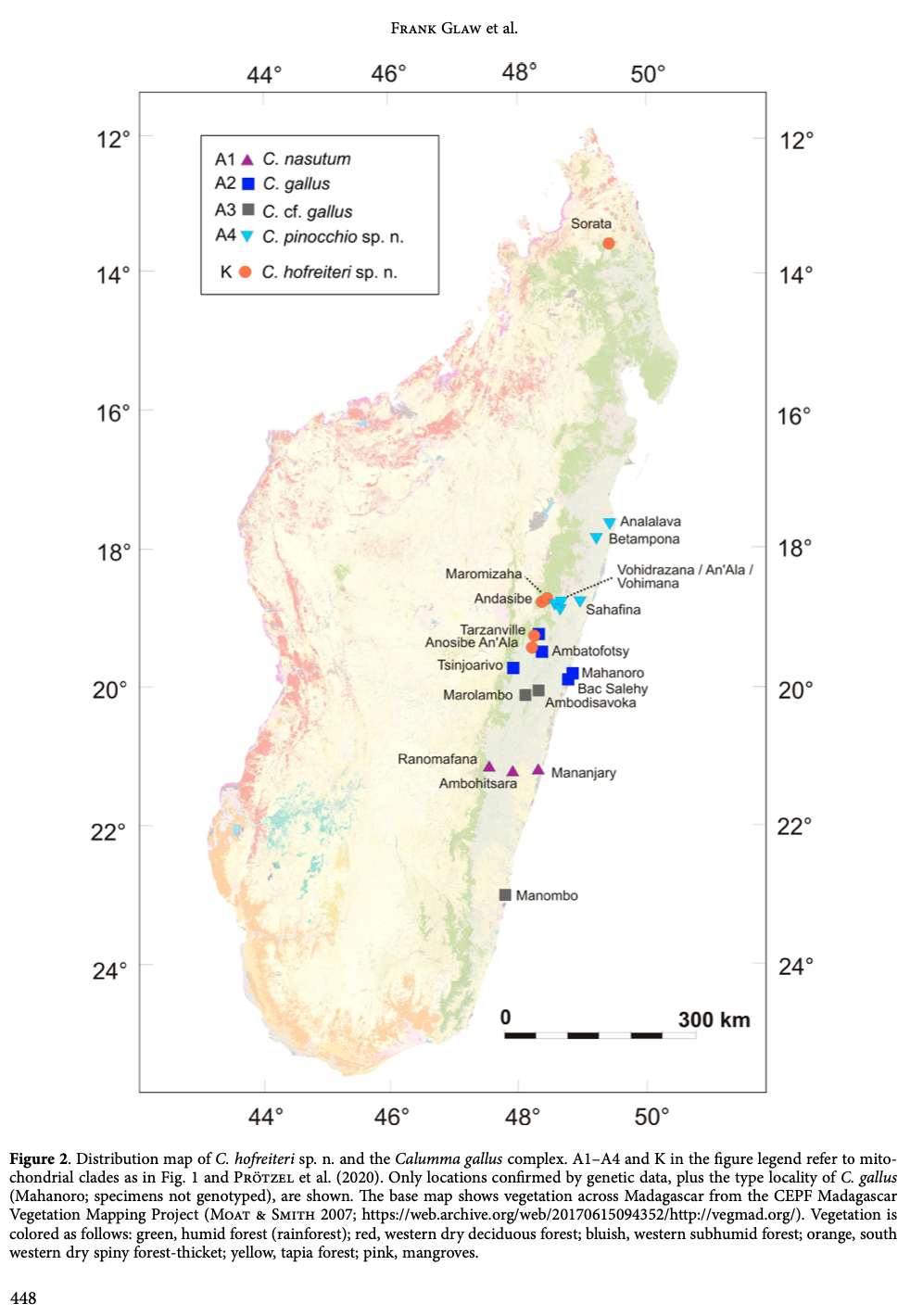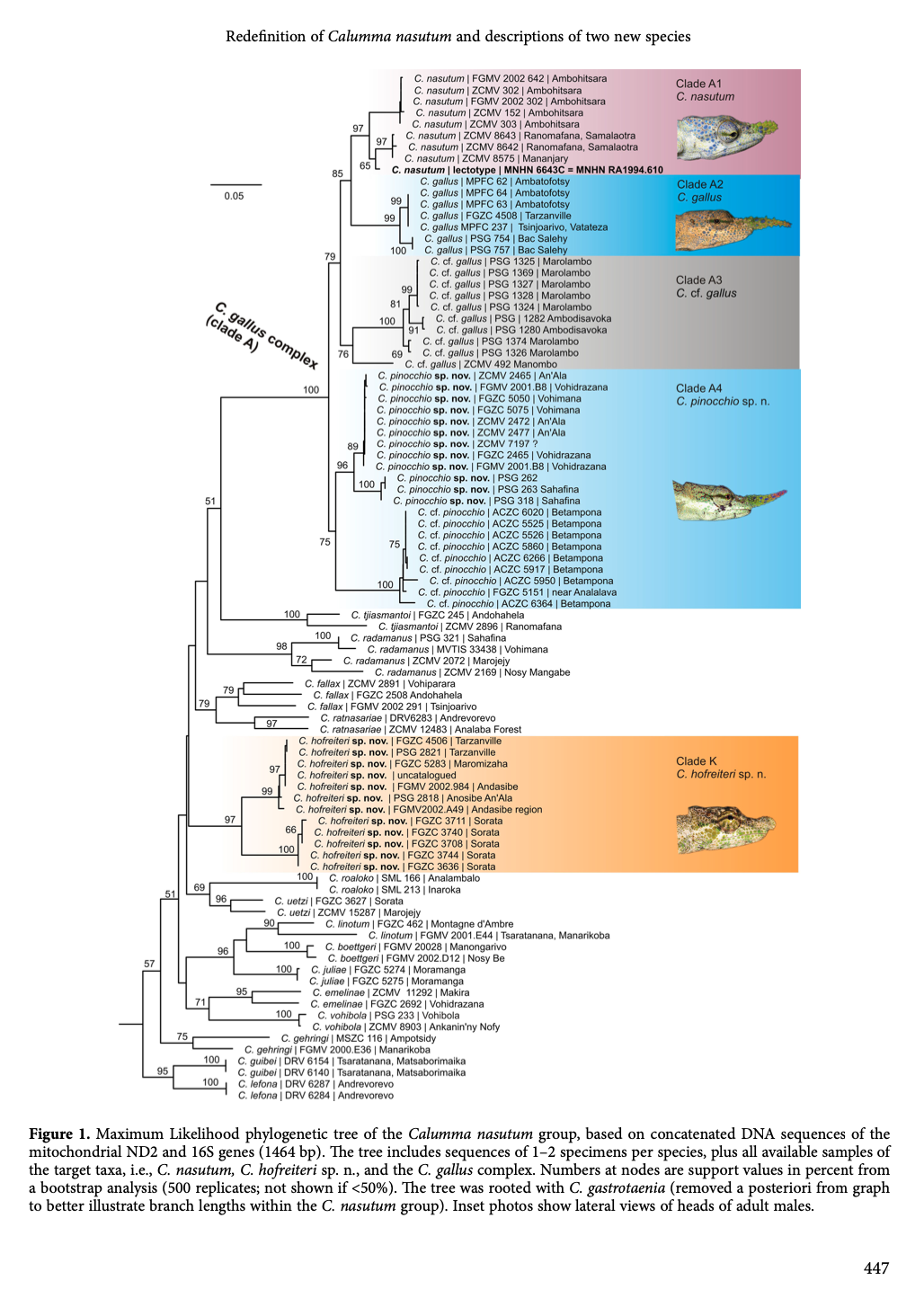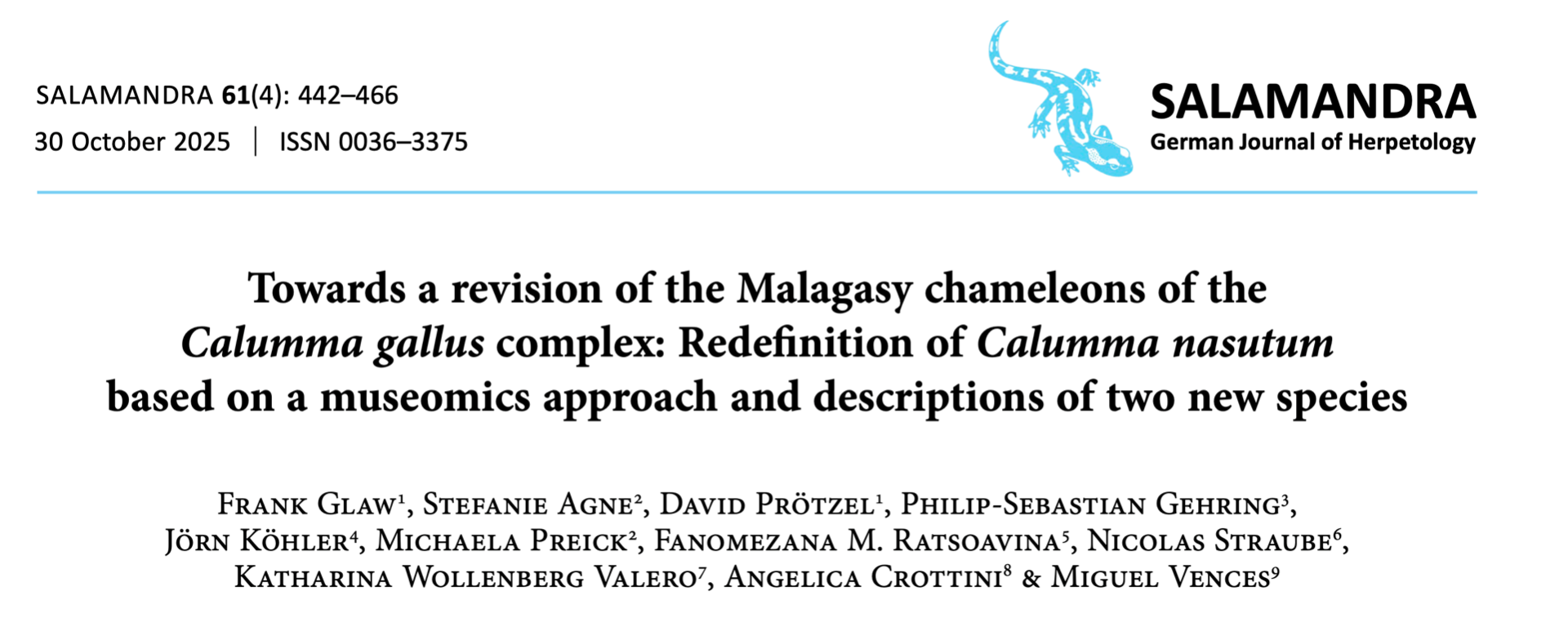The Nasutum Enigma: Cracking the Code of Madagascar’s Hidden Species



Main taxonomic changes:
Before: From: Now:
Calumma cf. nasutum Andasibe, Anosibe An'Ala, Tarzanville described as a new species Calumma hofreiteri
Calumma nasutum Ranomafana, Mananjary restricted to this area only
Calumma cf. gallus Vohimana and adjacent regions described as a new species Calumma pinocchio
Calumma gallus Tarzanville, Tsinjoarivo, near Toamasina found in several isolated forest patches
Notes:
*1 ... Female of C. hofreiteri are morphologically indistinguishable from those of Calumma emelinae.
*2 ... Males of C. nasutum have a larger, often yellow rostral appendage, femaleshave only a small, red rostral flap.
*3 ... C. gallus possesses a serrated upper margin, while C. pinocchio displays a smooth rostral structure.
